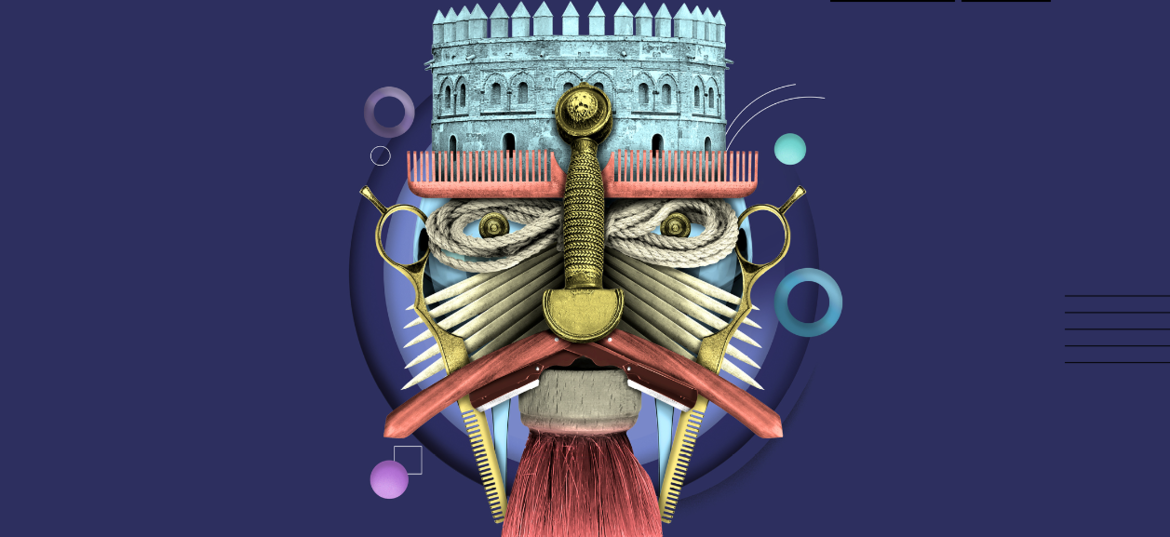The Barber of Seville
Gioachino Rossini

“I am the factotum of the city"-with this phrase the Barber of Seville is introduced in Gioacchino Rossini's opera of the same name.
“Here's the wig, quickly the beard! Here's the sanguine,quickly the note! Everyone asks me, everyone wants me, Figaro here, Figaro there!”
French writer and adventurer Caron de Beaumarchais introduced this prototypical hairdresser and barber into the European literature in 1775.
Mozart and his librettist Lorenzo Da Ponte drew from the second part of his Figaro trilogy, “La folle journée ou Le mariage de Figaro,” the comic opera “Le nozze di Figaro
“I am the factotum of the city"-with this phrase the Barber of Seville is introduced in Gioacchino Rossini's opera of the same name.
“Here's the wig, quickly the beard! Here's the sanguine,quickly the note! Everyone asks me, everyone wants me, Figaro here, Figaro there!”
French writer and adventurer Caron de Beaumarchais introduced this prototypical hairdresser and barber into the European literature in 1775.
Mozart and his librettist Lorenzo Da Ponte drew from the second part of his Figaro trilogy, “La folle journée ou Le mariage de Figaro,” the comic opera “Le nozze di Figaro | The Marriage of Figaro.
In 1782 Giovanni Pasiello adapted - as Rossini did later - the first part, “Le Barbier de Séville ou La précaution inutile,” producing with this “dramma giocoso” a highly successful opera performed throughout Europe.
In 1816, the 23-year-old Rossini composed his “Barber of Seville” in just three weeks to a libretto by Cesare Sterbini. The opera-which, with its initial title of “Almaviva o sia L'inutile precauzione,” differs markedly from Paisiello's popular original-was first performed during the 1816 Carnival at the Teatro Argentina in Rome.
However, the premiere was a complete failure. The composer remembers it so: “When my opera came out, they pounced like wild animals on the beardless little maestro, and the first performance was among the most stormy. I was not restless, however, and while the spectators booed, I applauded the performers.”
From Beaumarchais' subject, with many cutting remarks on the despotism of the French Ancien Régime, 41 years after Figaro's first appearance, a comedy of disguises or a commedia dell'arte was born, to the background of orchestral music, which tells the story of the wily barber, the bumbling Count of Almaviva, the eager Don Bartolo and the beautiful Rosina, around whom the whole affair revolves.
Of course the turbulent plot ends with a happy ending-not least for the young composer. Rossini's light-hearted and humorous style, with its “evergreen” arias, keeps on entertaining us - and has “survived” excellently all other reductions of “Figaro” in the musical theater.
Cast
Conductor
Direction
Set Design
Nicholas Bovey
Costumes
Arthur Arbesser
Light design
Marco Giusti
Choral Conductor
Choir
Orchestra
Count D'Almaviva
Pietro Adaini
Don Bartolo
Fabio Capitanucci
Rosina
Anna-Doris Capitelli
Figaro
Gurgen Baveyan
Bass
Nicola Ulivieri
Berta
Francesca Maionchi
Fiorello
Gianni Giuga
Ambrogio
Julien Lambert
Sergeant
Gianni Giuga
Source: https://www.haydn.it/
45€ / 35€ / 25€/40€ / 30€ / 20€/25€ / 15€ / 12€/5€
Tickets may be purchased online, at the box office of the Teatro Comunale of Bolzano (+39 0471 053800 / info@ticket.bz.it) or at the box office of the Auditorium Santa Chiara in Trento (+39 0461 213834 / puntoinfo@centrosantachiara.it).
For all updates and possible variations in the programme, go to the official website: http://www.centrosantachiara.it